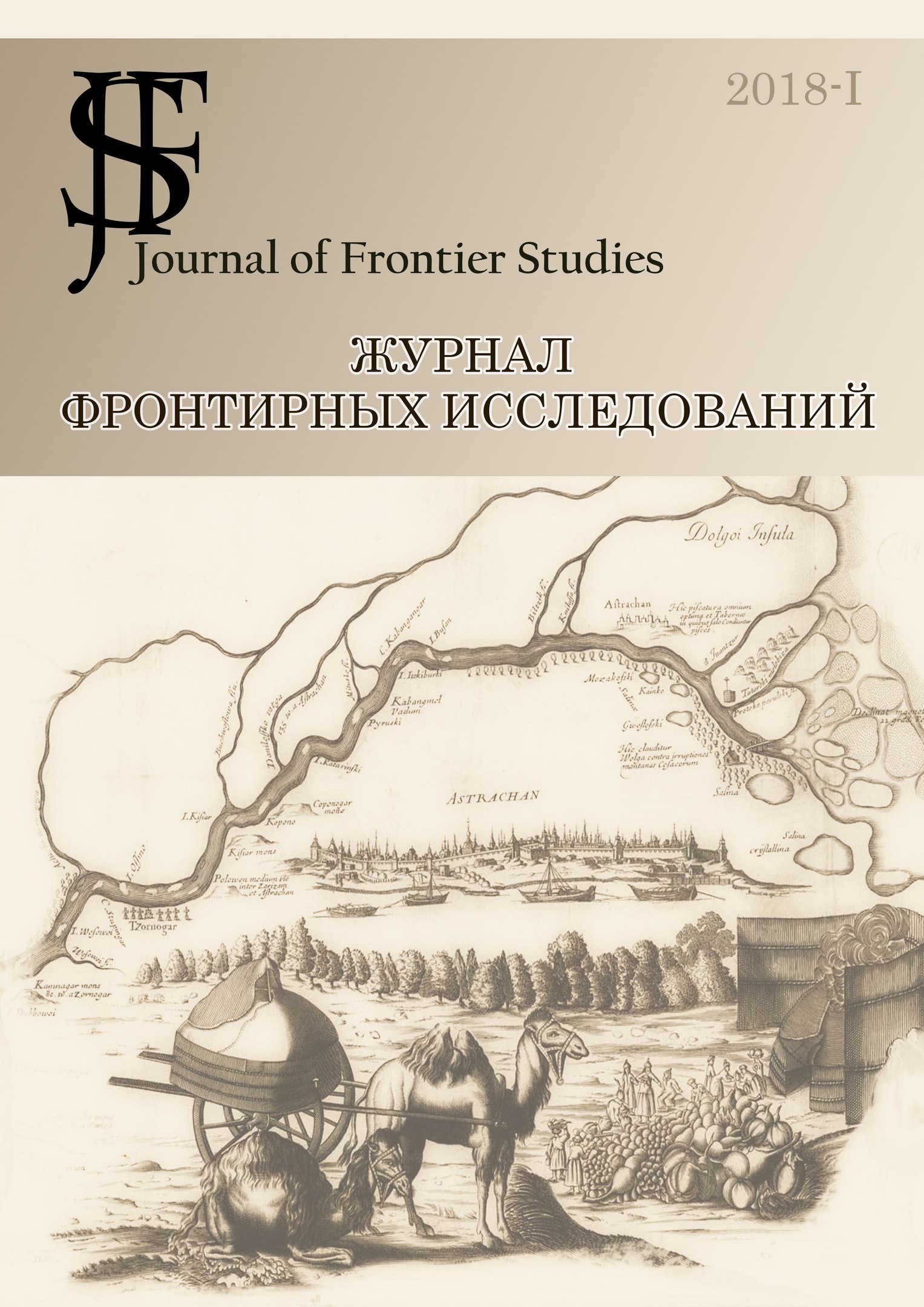Abstract
What is Russia? Is it “a riddle wrapped in a mystery” as the British Prime Minister Winston Churchill famously described it? A state driven by “messianic expansionism” according to the Nobel Peace Prize winner Andrei Sakharov? A civilization stuck between apocalypse and revolution in the words of the 20th century Russian philosopher Nikolai Berdyaev? Or is it simply a space defined by its vast size, imperial ideology, intertwined cultures, and co-habiting civilizations?
This paper examines how a Russian government approached and conceptualized its relationship with various non-Russian peoples during Russia’s relentless expansion along the southern and eastern frontiers. Throughout the centuries, Russia’s paramount concerns remained geopolitical rather than commercial. From the outset, Russian authorities insisted on the non-Russians’ subordinate political status codified through diplomatic means. Indigenous peoples, however, perceived their relationship with Russia through the prism of their own societies, which exhibited significant structural differences with that of the Russian state. Perceiving the native peoples through a set of distorted mirrors and its own rigid ideology, Russian authorities consistently denied a colonial nature of what was, in fact, Russia’s colonial empire. Inevitably, however, the rise of ethnic and national identities among the non-Russian peoples within the empire pulled down the very imperial structures that helped to create them.
References
AKAK – Akty sobrannye Kavkazskoiu arkheograficheskoiu kommissieiu (Т. 4). (1870). Tiflis: Tip. Glavnogo upravleniia namestnika Kavkazsogo.
ARAN – Rossiiskaia Akademiia Nauk. Arkhiv, F. 1714, op. 1, Novosel’skii, A. A., no. 66, l. 21.
Bakunin, V. (1939). Opisanie istorii kalmytskogo naroda. Krasnyi arkhiv: Istoricheskii zhurnal(3), 189–254.
Belokurov, S. L. (Ред.). (1889). Snosheniia Rossii s Kavkazom. Materialy izvlechennye iz Moskovskogo Ministerstva Inostrannykh del, 1578–1613. Moscow: Universitetskaia tip.
Cherniavsky, M. (1959). Khan or Basileus: An Aspect of Russian Mediaeval Political Theory. Journal of the History of Ideas 20(4), 459-476.
Conrad, S. (2012). German Colonialism: A Short History. Cambridge: Cambridge University Press.
Deringil, S. (1999). The Well-Protected Domains: Ideology and the Legitimation of Power in the Ottoman Empire, 1876-1909. London: I. B Tauris.
Gardanov, V. K. (1967). Obshchestvennyi stroi adygskikh narodov: 18-pervaia polovina 19 veka. Moscow: Nauka.
Inalcik, H. (1940-1986). Reis-ül-Küttab, in Islam Ansiklopedisi 13 vols. (The Encyclopedia of Islam) (Vol. vol. 9). Istanbul: Maarif Matbaasi.
Kazakhsko-russkie otnosheniia v 16–18 vv., no. 33. (1961). Alma-Ata: Akademiia Nauk Kazakhskoi SSR.
Kemper, M., & Reinkowski, M. (2005). Rechtspluralismus in der Islamischen Welt. Gewohnheitsrecht zwischen Staat und Gesellschaft. Berlin: Walter de Gruyter.
Khodarkovsky, M. (1992). Where Two Worlds Met: The Russian State and the Kalmyk Nomads, 1600-1771. Ithaca and London: Cornell University Press.
Khodarkovsky, M. (2002). Russia’s Steppe Frontier: The Making of a Colonial Empire, 1500-1800 (Т. 2). Bloomington, IN: Indiana University Press.
Khodarkovsky, M. (2006). Cambridge History of Russia, (Vols. 1, ch. 14). Cambridge UP.
Khodarkovsky, M. (2012). Bitter Choices: Loyalty and Betrayal in the Russian Conquest of the North Caucasus. Ithaca and London: Cornell University Press.
Kosven, M. O. (1964). Etnografiia i istoriia Kavkaza: Issledovaniia i materialy. Moscow: Vostochnaia literatura.
Lapin, V. (2008). Armiia Rossii v Kavakazskoi voine 18-19 vekov . St. Petersburg: Evropeiskii dom.
Leontovich, F. I. (1882). Adaty Kavkazskikh gortsev. Materialy po obychnomu pravu Severnogo i Vostochnogo Kavkaza (repr., Nalchik: El-Fa, 2002 ed., Vol. 1). Odessa: Tip. P. A. Zelenago,.
Malakhova, G. N. (2001). Stanovlenie i razvitie Rossiiskogo gosudarstvennogo upravleniia na Severnom Kavkaze v kontse 18–19vv. Rostov-na-Donu: SKAGS.
Mamakaev, M. (1973). Chechenskii taip v period ego razlozheniia. Groznyi: Checheno-Ingushskoe knizhnoe izd-vo.
Maremkulov, A. N. (2003). Osnovy geopolitiki Rossiiskogo gosudarstva na Severnom Kavkaze v 18– nachale 19 veka. Nalchik: Elbrus.
Marshall, A. (2006). The Russian General Staff and Asia, 1800-1917. London: Routledge.
Orazaev, G. M. (1984). Tiurkoiazychnye dokumenty iz arkhiva Kizliarskogo komendanta—Istochnik po sotsial'no-ekonomicheskoi istorii narodov Severnogo Kavkaza. Moscow: Vostochnaia literatura.
Patterson, G. C. (2006). Asian Borderlands; The transformation of Qing China’s Yunnan Frontier. Cambridge, MA: Harvard University Press.
Possevino, A. S. (1977). The Moscovia. (H. F. Graham, Trans.) Pittsburgh: University of Pittsburgh Press.
RGADA, F. 248, op. 113, Opis’ del Sekretnoi Ekspeditsii Senata, d. 1257, l. 14 ob.
Ruedy, J. (2005). Modern Algeria: The Origins and Development of a Nation. Bloomington: Indiana University Press.
Russko-dagestanskie otnosheniya 17–pervoi poloviny 18 vv., no. 96. (n.d.).
SIRIO – Sbornik Imperatorskogo Russkogo Istoricheskogo Obshchestva (Т. 41). (1884). Sankt-Peterburg
SIRIO –Sbornik Imperatorskogo Russkogo Istoricheskogo Obshchestva (Vol. 95). (1895). Sankt-Peterburg: A. Transhelya.
Sokurov, V. (1999). Institut vyezda na sluzhbu u cherkesov. El'brus(Vipusk Kabardino-Balkarskogo istoriko-rodoslovnogo obshchestva), 116-117.
Steinmetz, G. (2007). The Devil’s Handwriting: Precoloniality and the German Colonial State in Qingdao, Samoa, and Southwest Africa. Chicago: The University of Chicago Press.
Upravlencheskaia elita Rossiiskoi imperii. Istoriia ministerstv, 1802-1917. (2008). Sankt-Petersburg: Liki Rossii.
Vernadsky, G. (1969). A History of Russia (6th rev. ed. ed.). New Haven: Yale University Press.
Vinkovetsky, I. (2011). Russian America: An Overseas Colony of a Continental Empire: 1804-1867. Oxford: Oxford University Press.

This work is licensed under a Creative Commons Attribution-NonCommercial-NoDerivatives 4.0 International License.

